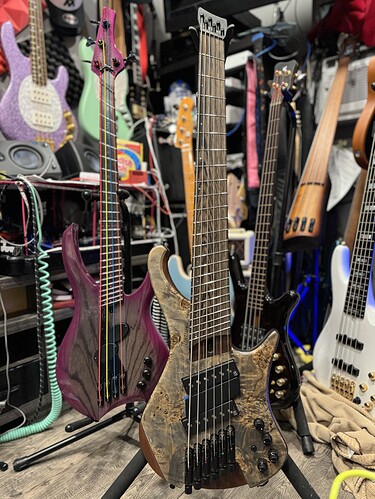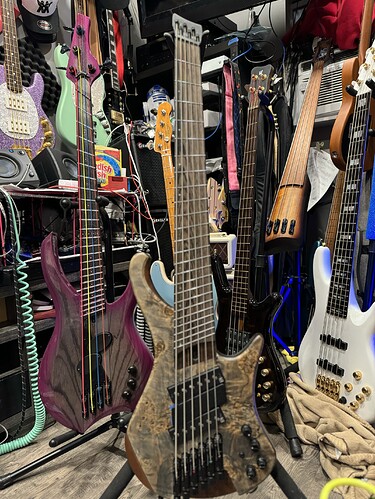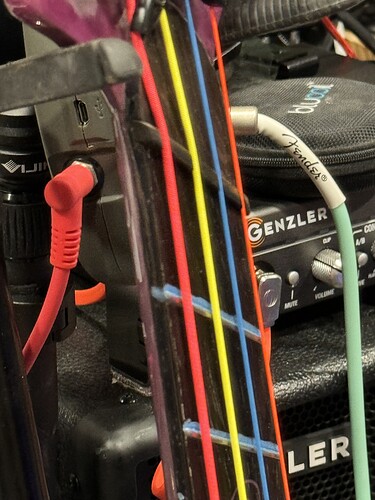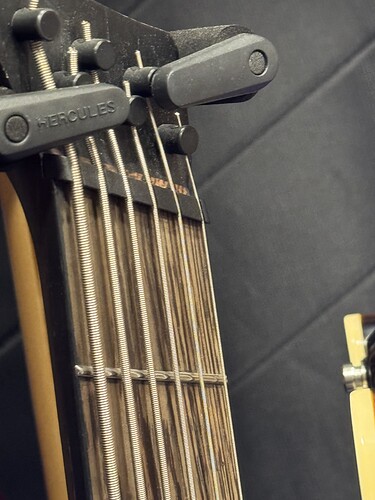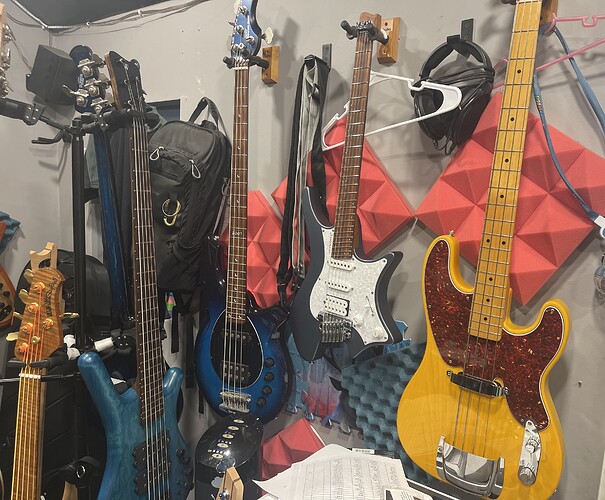Well, Multi scale has it pros and cons.
The pros is obvious the string tension and it looks awesome. Depending on the brand it could be subtle or aggressive fanning.
Cons
The issue fanning frets would be the upper end where playing chords can be a bit cramp. Also if not done right in this case Ibanez, playing a low C or F can be annoying or even painful because if the nut is not properly design to avoid finger rubbing then your index finger fires and second inside knuckle would rub the sharp top of the nut.
My custom short scale multi scale has no problem, in fact it’s very comfortable as it slope down and when I fret the F note my finger would comfortably lay on top of the smooth polished top of the nut.
Ibanez EHB 1506MS is quite an instrument. It’s pretty good. The finish product is to the satisfactory and most of the features are really great, but they could have benefited from a bit more attention to details. The electronics are pretty good, OEM Nordstrand pickup with Ibanez preamp. It’s very versatile and very punchy with lots of Ibanez signature Nasally mid forward at idle with all center detents.
I love finger ramp, the one included are kinda an after thought, the shape does not match the pickup and there’s no radius just a flat piece of wood. It’s not like Ibanez doesn’t have an in house expert on ramp, Gary Willis signature models have excellent design ramp.
The multi-ply neck is smooth but not very clean looking, you can see the pieces of layers crossing to the next. It’s not something I expect from a $1600 imports. I paid less on my custom neck through Short scale from Lignum and that bass as a full page of the list of parameters plus some more surprise that the luthier put on.
Here’s the making of the Space bass
And me noodling on it
I highly recommend trying the Multi scale bass out, they are fun and you don’t even think about the fan frets and it comes to you quite naturally most production models would have less degree of fanning and you should not miss many notes on your first fo round. My custom Space bass is stretch out for a maximum visual effect and while it takes a few minutes to recalibrate in order to fret the note on the fret it’s still pretty easy to play.
I tried Dingwall, Spector, and Strandberg. Dingwall feels great but I just don’t like the bass although I’d kill for the Super P. I don’t like Spector, it’s just me. I like their other traditional models. Strandberg, well, I love the Boden neck 3 sides and no curve on the back of the neck offers a very unique playing sensation, but not a fan of the ergonomics body design. I’m not a prog player and don’t spend 20 hours a day practicing plus I like the neck to be close to horizontal playing position and the instrument is designed for somewhere much steeper closer to classical guitar position. I love their Guitars I have the NX6 (Strats) mainly because I’m not a guitar player and have no preference so the ergonomic fits me right.
If I’m in the mood for another MS, I’d get a custom made one for sure.
Hope this help.
